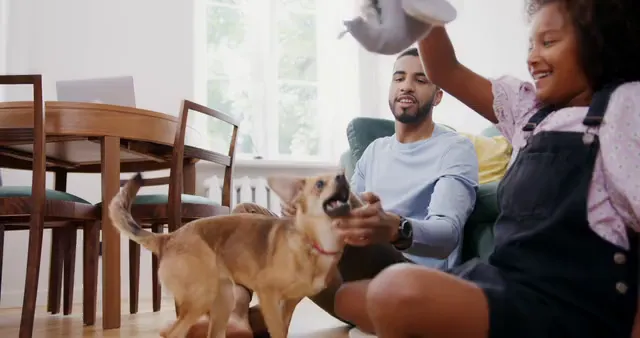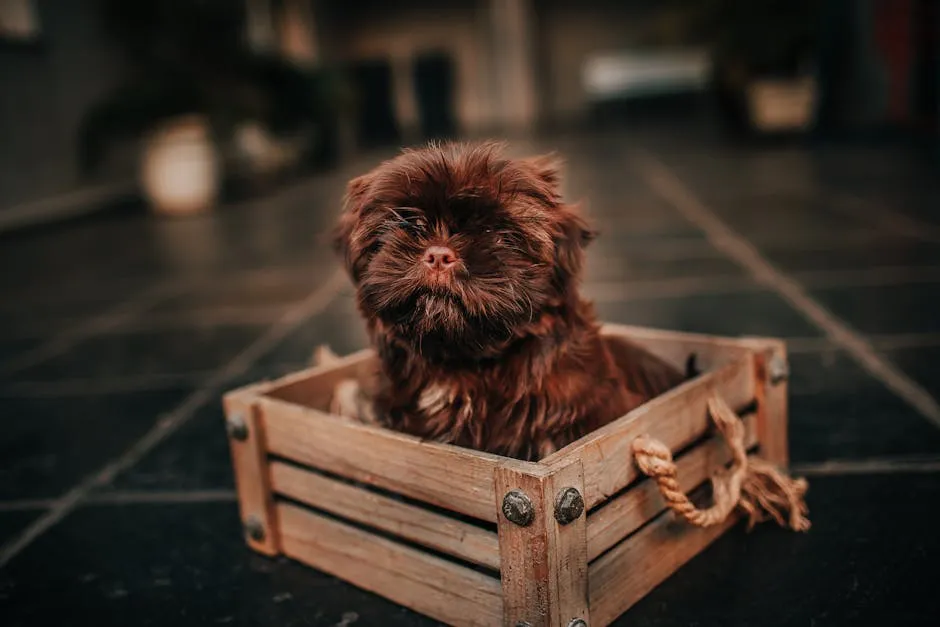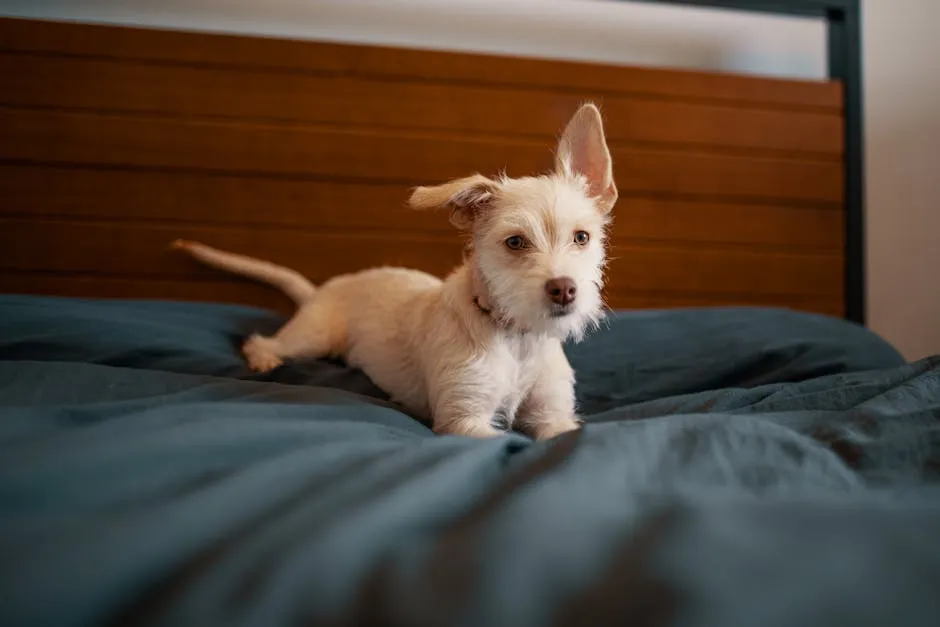Introduction
Crate training is essential for puppies. It offers them a safe space to relax. Many pet owners misunderstand crates as cages. The truth is, they mimic a den. Proper crate training creates comfort and security.
To make crate training even more effective, consider using an Amazon Basics Dog Crate. This crate is sturdy and provides a cozy environment for your pup, making them feel secure while you’re away.
Summary and Overview
Crate training helps puppies learn boundaries. It provides a safe, cozy spot for them. Puppies naturally avoid soiling their sleeping area, aiding house training. Crates can prevent destructive behavior when you’re not home. Gradually introducing the crate with positive reinforcement builds trust. Start with short durations, rewarding calm behavior. This guide covers crate training benefits, choosing the right crate, and step-by-step training methods. You’ll learn how to make crate time enjoyable for your puppy.

To enhance your puppy’s comfort, you might also want to check out a PetFusion Ultimate Dog Bed. This bed provides a plush, supportive space for your puppy to relax after crate time, ensuring they feel pampered and loved.
Benefits of Crate Training
Why Crate Training is Essential
Crate training taps into your puppy’s natural instincts. Dogs are den animals, craving a cozy, secure space. A crate acts as their personal den, providing safety and comfort. It helps reduce anxiety during stressful times. When you need to leave your puppy alone, the crate keeps them secure. It also aids in house training, as puppies typically avoid soiling their sleeping area. As a result, they learn to hold their bladder. Plus, it can prevent destructive behaviors when you’re not home. A well-trained puppy learns boundaries, making both your lives easier. Overall, crate training offers a blend of comfort, safety, and structure for your puppy.

Speaking of comfort, don’t forget to add a soft touch to their crate with a PetFusion Waterproof Dog Bed Cover. This cover protects the bed from spills and accidents, keeping it fresh and clean for your furry friend!
Long-term Benefits of Crate Training
Crate training extends beyond the puppy stage. It plays a crucial role during travel, keeping your dog safe in unfamiliar environments. Whether you’re on a road trip or visiting the vet, a familiar crate can ease anxiety. It also provides a secure place for your dog to recover after surgery. They can rest without the risk of injury or disturbance. Moreover, crate training helps manage separation anxiety over time. Gradually introducing your puppy to time alone in the crate can build their confidence. This positive experience fosters independence, making future separations easier for both of you. Crate training is a valuable investment in your dog’s well-being.

For those long car rides, consider a Dog Seat Cover for Car. This will keep your car clean while ensuring your pup has a comfy spot to relax during travel.
Choosing the Right Crate
Types of Crates
When it comes to crates, there are a few popular types to consider. Wire crates are sturdy and well-ventilated, making them a great option for most dogs. They offer visibility and can be folded for storage. However, energetic puppies might chew on the bars, potentially causing damage.

Plastic crates provide a cozy, den-like environment. They’re lightweight and excellent for travel, especially on planes. Yet, they can be harder to clean and lack ventilation compared to wire models.
Soft-sided crates are great for travel but are best suited for calm dogs. They’re easy to set up but may not withstand strong chewers. Lastly, collapsible crates are convenient for storage and transport but can be less durable. Each type has its pros and cons, so choose based on your puppy’s needs and habits.
Size and Comfort Considerations
Selecting the right size crate is vital for your puppy’s comfort. Ideally, the crate should be just big enough for your puppy to stand, turn around, and lie down comfortably. If it’s too large, your puppy might decide to use one end as a bathroom.

Bedding is another important factor. Use soft, comfortable materials to create a cozy environment. Adding a blanket can help block noise and drafts, making it feel more secure.
Placement matters too! Place the crate in a quiet area where your puppy can feel safe but still be part of the household activities. This ensures they don’t feel isolated. A well-placed crate with proper bedding creates a perfect retreat for your furry friend.
How to Crate Train a Puppy
Step-by-Step Training Process
Introduction to the Crate
Introducing your puppy to the crate should be a positive experience. Start by allowing your puppy to explore the crate with the door open. Place their favorite toys or treats inside to encourage curiosity. Positive reinforcement is key—praise your pup when they venture inside. This creates a happy association with the crate. Keep sessions short at first. Gradually increase the time they spend investigating the crate. Over time, your puppy will view it as a cozy den rather than a confinement.

For those curious pups, a KONG Classic Dog Toy can be a great addition to keep them entertained while in the crate. Fill it with treats to make crate time a fun experience!
Gradual Confinement
Once your puppy is comfortable with the crate, it’s time for gradual confinement. Start by closing the door for short periods while your puppy enjoys a treat or chew toy inside. Make sure to stay nearby to reassure them. As they become more relaxed, slowly extend the time the door remains closed. Each time they remain calm, reward them with praise or treats. This helps reinforce their positive feelings about the crate. Remember, patience is crucial during this phase.

Establishing a Routine
Establishing a routine around the crate is essential for success. Incorporate crate time into your puppy’s daily schedule. Feed your puppy meals inside the crate to create a positive association. After meals, take them outside for potty breaks. This helps them learn to hold their bladder longer. Consistent scheduling will help your puppy understand when it’s time to relax in their crate. This routine not only helps with crate training but also aids in overall house training.
Troubleshooting Common Issues
Addressing Whining and Barking
It’s common for puppies to whine or bark when first crate training. These sounds often indicate discomfort or the need to go outside. First, check if your puppy needs a potty break. If not, remain calm and avoid giving attention to the whining. Instead, wait until they settle down before letting them out. Consider using soothing music or a comforting toy to help them relax. Over time, your puppy will learn that calm behavior leads to more positive outcomes.

For some extra fun in the crate, try a ZippyPaws Squeaky Dog Toys. These toys provide entertainment and can help keep your puppy engaged while they learn to love their crate.
Preventing Negative Associations
It’s crucial to prevent negative associations with the crate. Never use the crate as a punishment; this can lead to fear and anxiety. Instead, make it a safe haven. Always ensure your puppy has access to toys or treats while inside. Reinforce positive experiences with praise when they enter the crate willingly. This approach promotes a healthy relationship between your puppy and their crate, making it a space they enjoy visiting. Building this bond is essential for successful crate training.
Tips for Successful Crate Training
Best Practices
Crate training requires consistency and patience. Start by setting a regular schedule for crate time. This routine helps your puppy understand when to expect crate use. Use a calm, positive tone when introducing the crate. This builds a welcoming atmosphere.

Avoid overusing the crate. Puppies need social interaction, playtime, and exercise. Crating for too long can lead to anxiety or boredom. Generally, limit crate time to a few hours. As your puppy adapts, gradually increase the duration. Remember, the goal is to make the crate a safe and enjoyable space.
To help with training, consider a Dog Training Clicker. It’s a handy tool for reinforcing good behavior and can make training sessions more effective!
Creating a Positive Environment
To create a positive environment, make the crate inviting. Start with comfortable bedding and familiar toys. This encourages your puppy to view the crate as a cozy den.

Incorporate treats during crate time. For example, use a stuffed toy or chew to keep them engaged. You can also reward them with praise when they enter willingly. Consider playing gentle music to soothe them.
Always monitor your puppy’s behavior in the crate. If they appear anxious, spend more time on gradual introductions. Positive reinforcement techniques will help them feel secure and happy in their new space.
FAQs
Is crate training cruel?
No, crate training is not cruel when done correctly. It provides a safe space for your puppy. Use positive reinforcement to create a comfortable environment.
How long does it take to crate train a puppy?
The time varies by puppy temperament. Some adapt quickly, while others may take weeks. Consistent training helps ease the process.
Can older dogs be crate trained?
Yes, older dogs can be crate trained. It may take more time and effort, but many can adapt successfully.
What should I do if my puppy refuses to enter the crate?
Try using treats or toys to entice them inside. Make the crate a fun place by playing games. If they’re still hesitant, give them time to explore without pressure.
How long can a puppy stay in a crate?
Puppies should not be crated for more than a few hours. Limit crate time based on their age. Young puppies need frequent potty breaks. Always consider their individual needs.
Please let us know what you think about our content by leaving a comment down below!
Thank you for reading till here 🙂
For more information on creating a positive space for your puppy during crate training, check out this guide on how to create a dog friendly space for stress free crate training.
All images from Pexels





